This week I was finally able to get some decent images of Marsh Wrens.
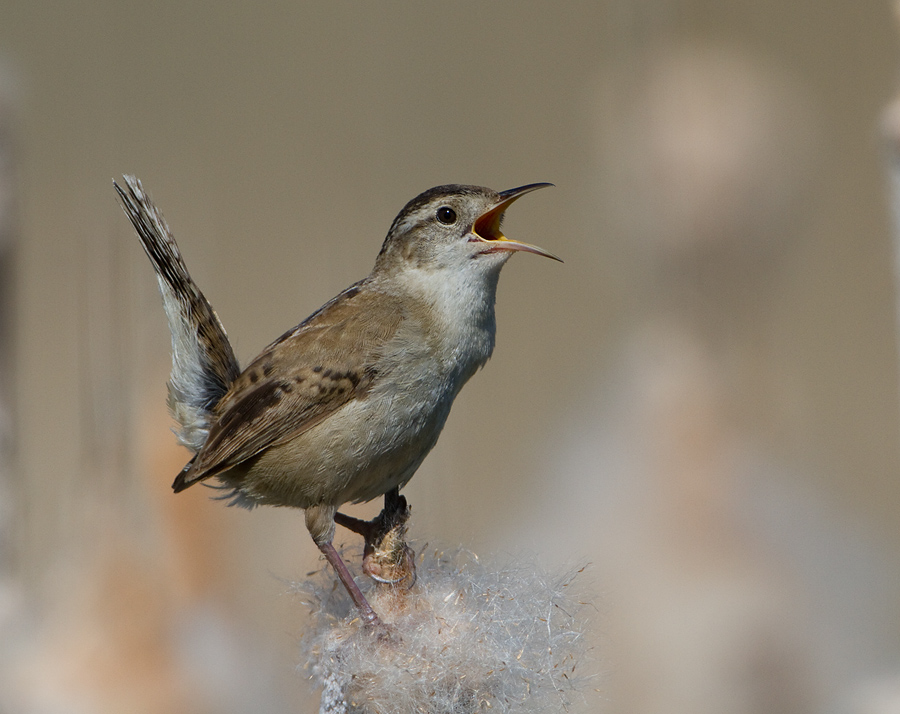
Canon 7D, 1/2000, f/8, ISO 400, 500 f/4, 1.4 tc
In the past these birds have always been buried too deeply in vegetation for me to get shots I liked but a couple of days ago they finally cooperated with me.
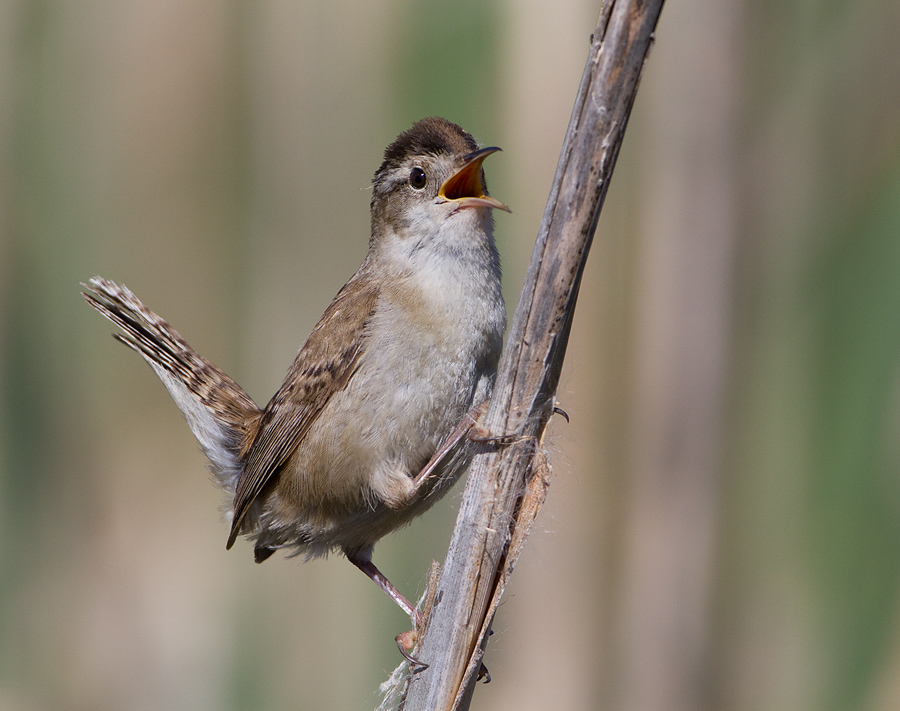
Canon 7D, 1/1600, f/8, ISO 400, 500 f/4, 1.4 tc
Marsh Wrens have incredibly interesting behaviors. For example, western males must learn up to 200 different songs (eastern birds only learn about 50). Perhaps that’s why these males sing so much – it would take a lot of practice to learn that many “tunes”.

Canon 7D, 1/1600, f/8, ISO 400, 500 f/4, 1.4 tc
These birds are extremely territorial and aggressive. They are polygynous (males mate with multiple females) and in order to attract females the male builds from 6 to 22 “dummy” nests for every one that is actually used to raise a brood of chicks. We could see several of these nests buried in the cattails along the refuge road.

Canon 7D, 1/2500, f/7.1, ISO 400, 500 f/4, 1.4 tc
According to the Bear River Blog many of these nests were destroyed by our recent stormy weather and heavy rains so many of these males have had to start over.
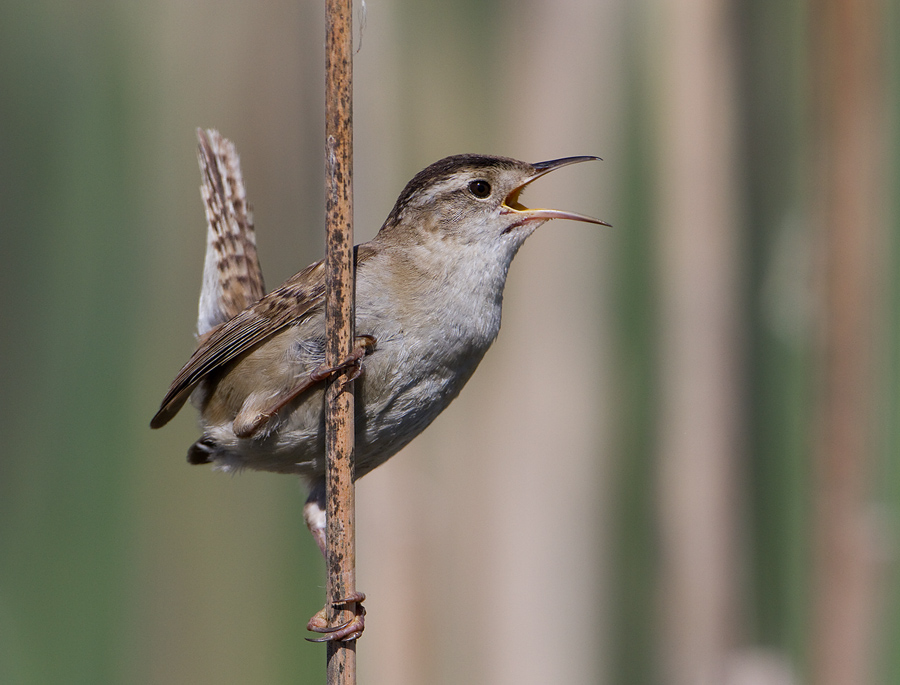
Canon 7D, 1/2000, f/8, ISO 400, 500 f/4, 1.4 tc
Marsh Wrens of both sexes regularly destroy eggs and chicks of other birds near their territories, including those of other Marsh Wrens. This behavior is thought to be a method of preserving the food source for their own brood.

Canon 7D, 1/2000, f/8, ISO 400, 500 f/4, 1.4 tc
In one study, Marsh Wrens destroyed up to 52% of the Red-winged Blackbird nests in a British Columbia marsh. But the aggression works both ways. RWBB’s regularly attack singing Marsh Wrens and Yellow-headed Blackbirds jump up and down on wren nests, compressing them and making them unusable.
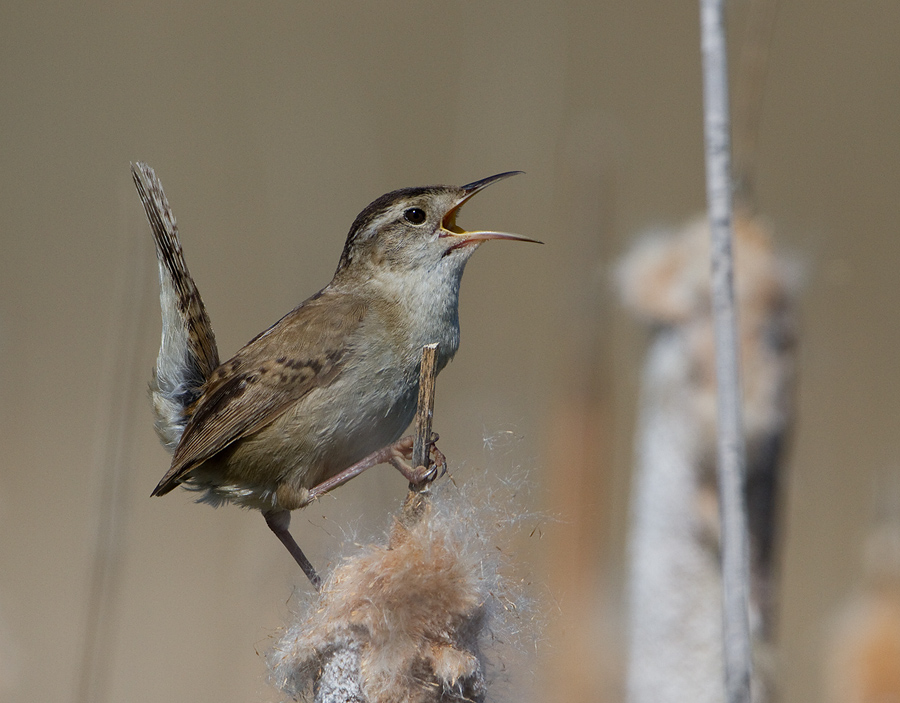
Canon 7D, 1/2500, f/8, ISO 400, 500 f/4, 1.4 tc
The amount of time these males spend singing during nesting season is truly impressive. It is thought that the singing has multiple functions: establishing and maintaining breeding territories, stimulating the “current” female to allow mating and attracting additional females to his multiple nests. Females do not “sing”, in the usual sense of the word.
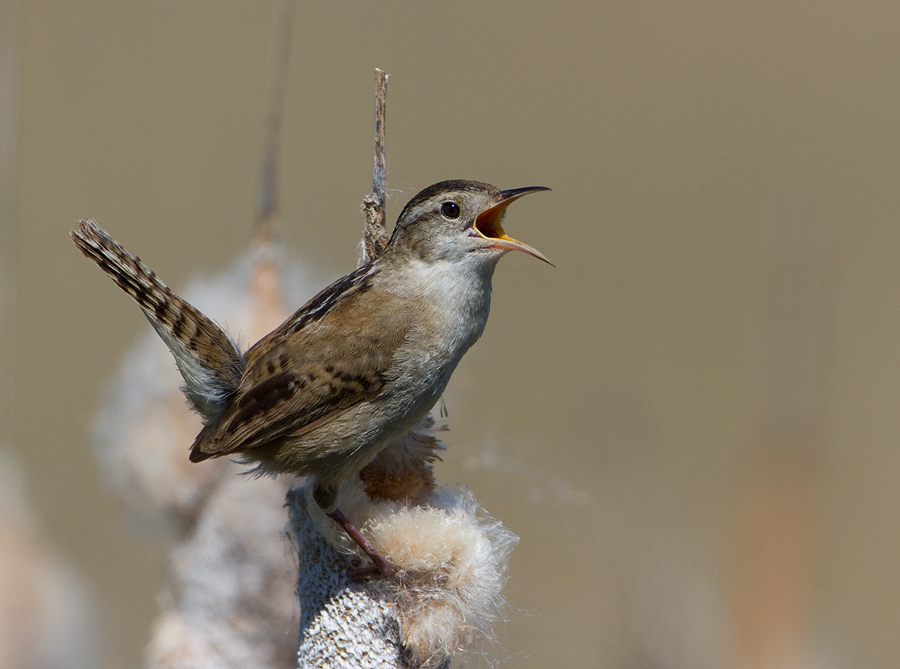
Canon 7D, 1/2500, f/7.1, ISO 400, 500 f/4, 1.4 tc
Last years cattails are their favorite singing perch.
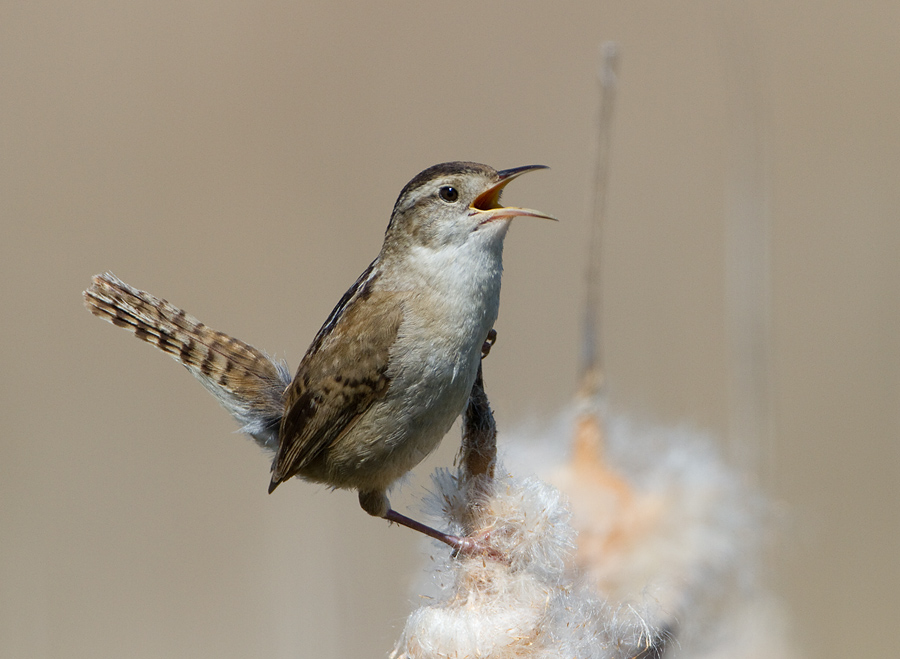
Canon 7D, 1/1600, f/7.1, ISO 400, 500 f/4, 1.4 tc
Cattails are also used heavily in nest construction – strips of leaves for the shell of the nest and the fluffy “down” for the lining (interestingly, snake skins are sometimes used in nest construction).

Canon 7D, 1/2500, f/6.3, ISO 400, 500 f/4, 1.4 tc
What a morning I had with the Marsh Wrens. These saucy little birds have a heck of an attitude!
Ron


I walk by and see marsh wrens every morning as I go to work (rebuilding U of WA Husky Stadium. Your photos are wonderful and I plan to paint several of the scenes I have photographed as well. I love the detail. very nice.
Thanks very much Dan. Good luck with your paintings of these little dynamos.
Seems as thought you had great light for your ‘morning with the wrens’ Ron- wonderful images all!